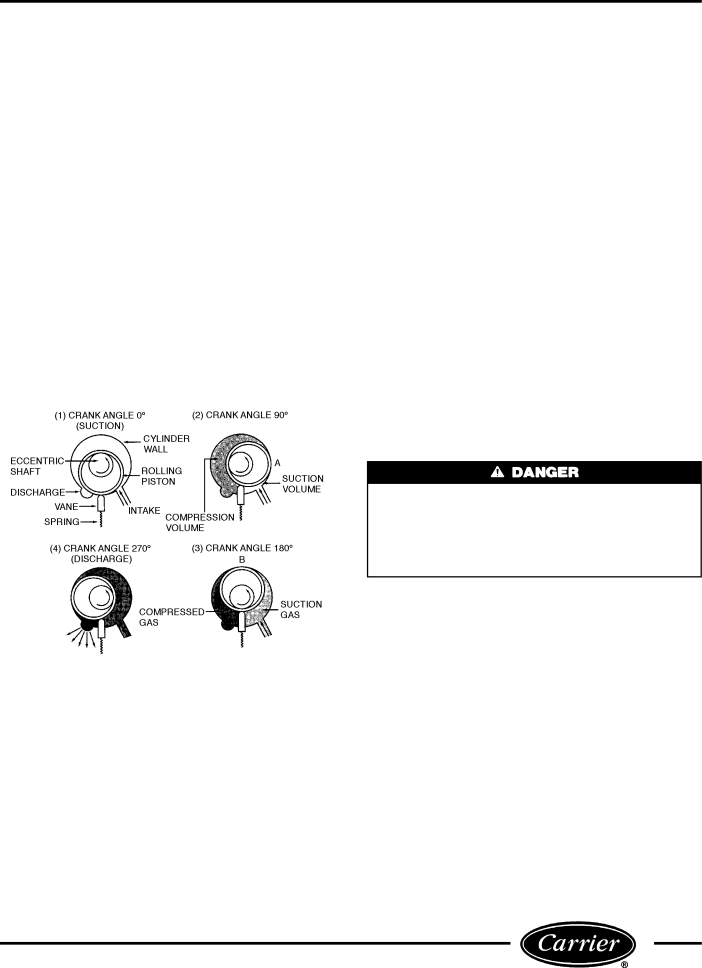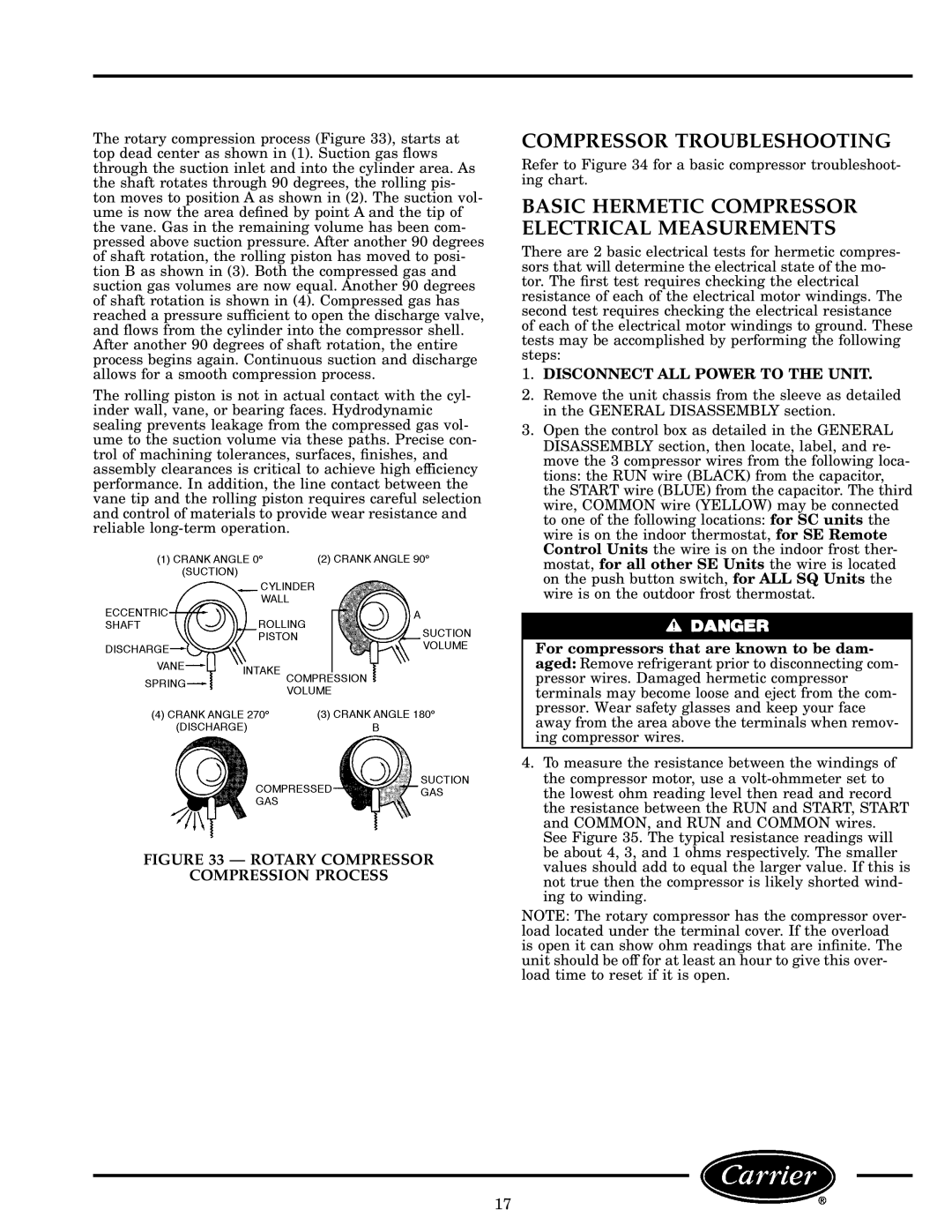
The rotary compression process (Figure 33), starts at top dead center as shown in (1). Suction gas ¯ows through the suction inlet and into the cylinder area. As the shaft rotates through 90 degrees, the rolling pis- ton moves to position A as shown in (2). The suction vol- ume is now the area de®ned by point A and the tip of the vane. Gas in the remaining volume has been com- pressed above suction pressure. After another 90 degrees of shaft rotation, the rolling piston has moved to posi- tion B as shown in (3). Both the compressed gas and suction gas volumes are now equal. Another 90 degrees of shaft rotation is shown in (4). Compressed gas has reached a pressure suf®cient to open the discharge valve, and ¯ows from the cylinder into the compressor shell. After another 90 degrees of shaft rotation, the entire process begins again. Continuous suction and discharge allows for a smooth compression process.
The rolling piston is not in actual contact with the cyl- inder wall, vane, or bearing faces. Hydrodynamic sealing prevents leakage from the compressed gas vol- ume to the suction volume via these paths. Precise con- trol of machining tolerances, surfaces, ®nishes, and assembly clearances is critical to achieve high efficiency performance. In addition, the line contact between the vane tip and the rolling piston requires careful selection and control of materials to provide wear resistance and reliable
FIGURE 33 Ð ROTARY COMPRESSOR
COMPRESSION PROCESS
COMPRESSOR TROUBLESHOOTING
Refer to Figure 34 for a basic compressor troubleshoot- ing chart.
BASIC HERMETIC COMPRESSOR ELECTRICAL MEASUREMENTS
There are 2 basic electrical tests for hermetic compres- sors that will determine the electrical state of the mo- tor. The ®rst test requires checking the electrical resistance of each of the electrical motor windings. The second test requires checking the electrical resistance of each of the electrical motor windings to ground. These tests may be accomplished by performing the following steps:
1.DISCONNECT ALL POWER TO THE UNIT.
2.Remove the unit chassis from the sleeve as detailed in the GENERAL DISASSEMBLY section.
3.Open the control box as detailed in the GENERAL DISASSEMBLY section, then locate, label, and re- move the 3 compressor wires from the following loca- tions: the RUN wire (BLACK) from the capacitor, the START wire (BLUE) from the capacitor. The third wire, COMMON wire (YELLOW) may be connected to one of the following locations: for SC units the wire is on the indoor thermostat, for SE Remote Control Units the wire is on the indoor frost ther- mostat, for all other SE Units the wire is located on the push button switch, for ALL SQ Units the wire is on the outdoor frost thermostat.
For compressors that are known to be dam- aged: Remove refrigerant prior to disconnecting com- pressor wires. Damaged hermetic compressor terminals may become loose and eject from the com- pressor. Wear safety glasses and keep your face away from the area above the terminals when remov- ing compressor wires.
4.To measure the resistance between the windings of the compressor motor, use a
See Figure 35. The typical resistance readings will be about 4, 3, and 1 ohms respectively. The smaller values should add to equal the larger value. If this is not true then the compressor is likely shorted wind- ing to winding.
NOTE: The rotary compressor has the compressor over- load located under the terminal cover. If the overload is open it can show ohm readings that are in®nite. The unit should be off for at least an hour to give this over- load time to reset if it is open.
17
